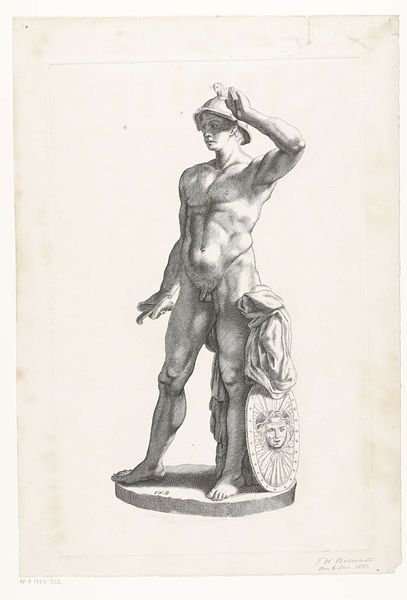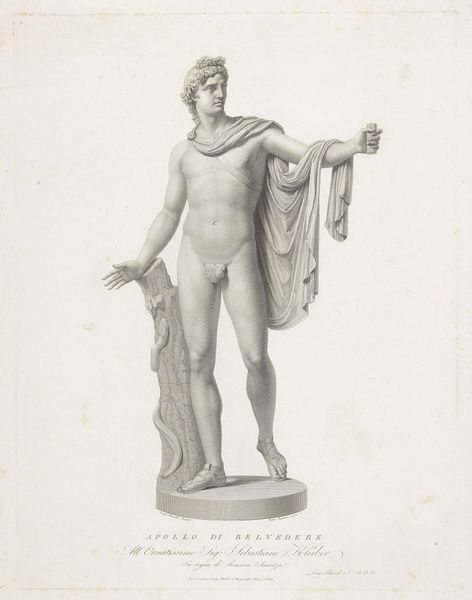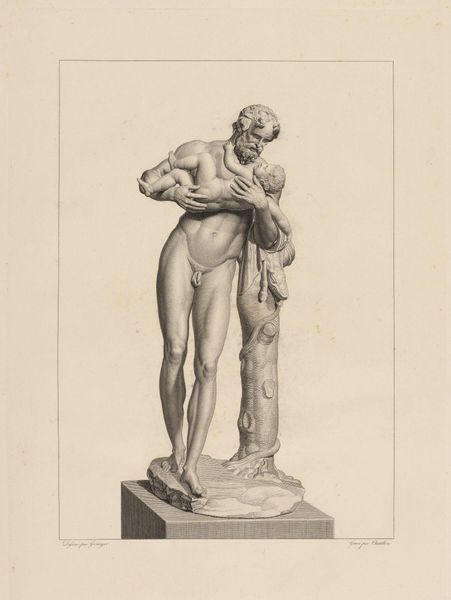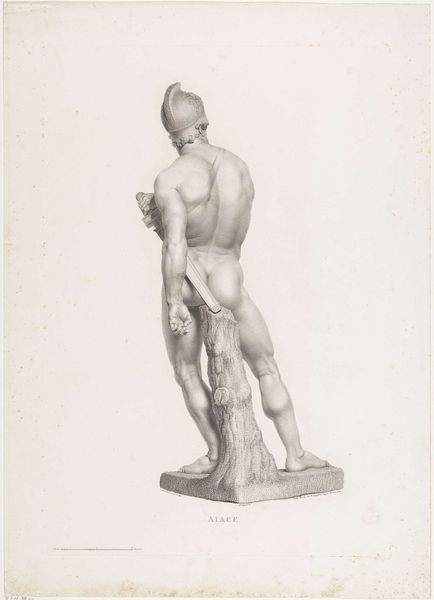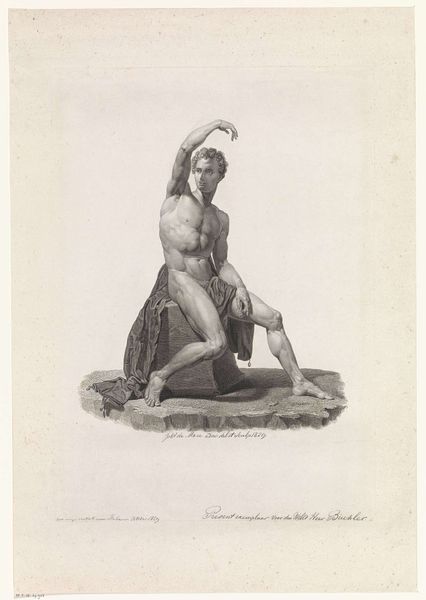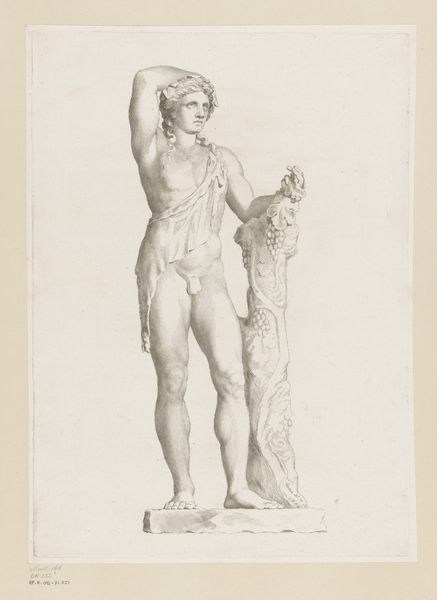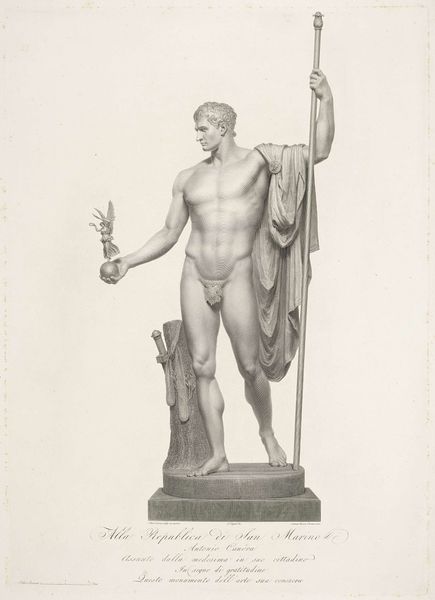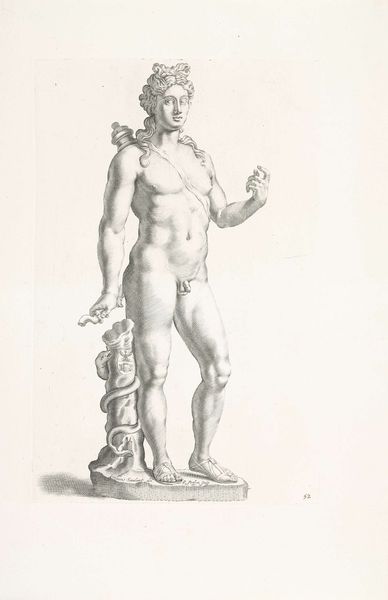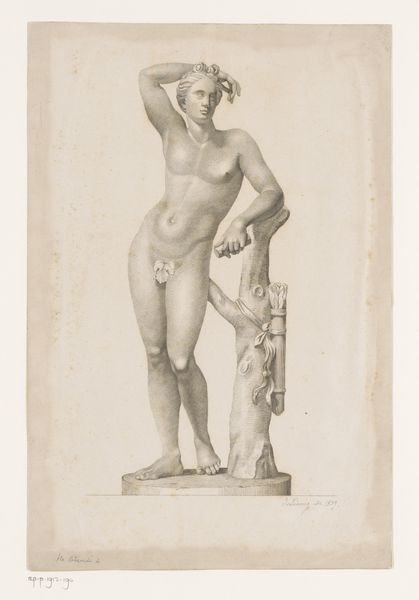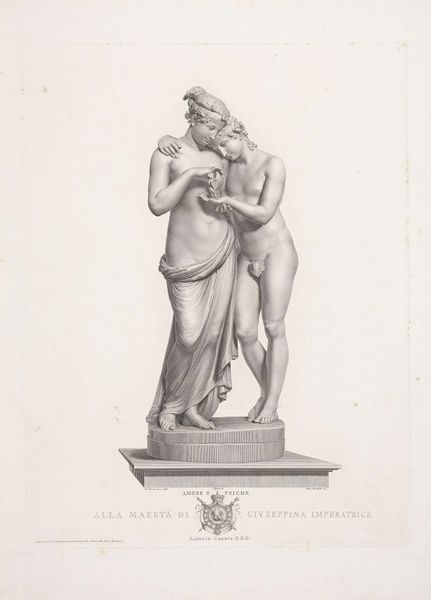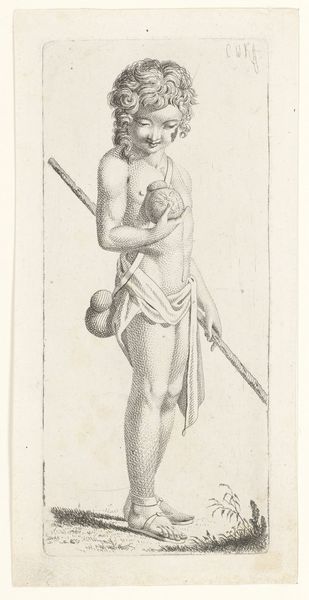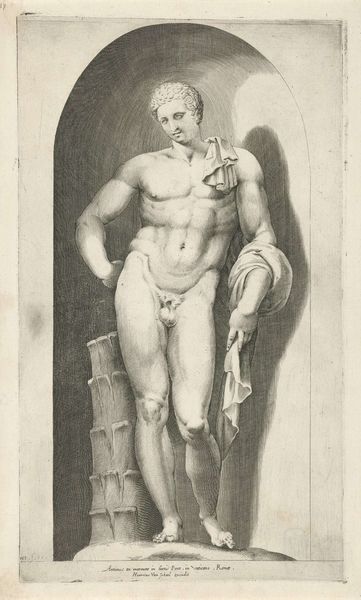
drawing, pencil, graphite
#
portrait
#
pencil drawn
#
drawing
#
neoclacissism
#
pencil sketch
#
charcoal drawing
#
figuration
#
pencil drawing
#
pencil
#
graphite
#
portrait drawing
#
history-painting
#
academic-art
#
nude
Dimensions: height 628 mm, width 401 mm
Copyright: Rijks Museum: Open Domain
Editor: This drawing, "Hector," created sometime between 1793 and 1838 by Angelo Bertini, uses graphite and pencil to depict a standing nude male figure. The fine lines give it a sculptural quality, like a classical statue come to life. What catches your eye when you look at it? Curator: Well, considering Bertini's access to materials, graphite wasn't merely a readily available medium; it was an industrial product undergoing significant refinement during this period. We see here its use to represent the idealised male form. This Neoclassical fascination with the body connects to wider consumption patterns where even knowledge and artistic talent become a commodity. Editor: So you're saying the very choice of graphite is significant, tied to the economic landscape? Curator: Precisely! The artwork isn't just a reflection of classical ideals; it's also a product of the graphite industry. Who were the people who mined this graphite? How much labour did it require to grind it? We may romanticize about art, but at some point, it reflects a material production. Even his portrayal of a historical hero, Hector, it is a 'commodity fetish'; it distances the heroic figure from it original historical context and focuses our eye on the artist's technical accomplishment in representing this image. Editor: I hadn’t considered the role of industry and labour in this image of supposed ‘timeless’ beauty. I always thought graphite was…just graphite. Curator: These details about graphite processing are significant. Its widespread usage signifies an acceptance of mass-produced materials into fine art creation. Editor: That's such a different way of thinking about it! Now I see "Hector" not just as an image, but as a testament to both artistic skill and industrial advancements. Curator: Exactly. That makes "Hector," more than a simple historical representation; it's an intriguing cultural product with all its contradictions and hidden narratives about how goods become 'precious' and are made into icons.
Comments
No comments
Be the first to comment and join the conversation on the ultimate creative platform.

